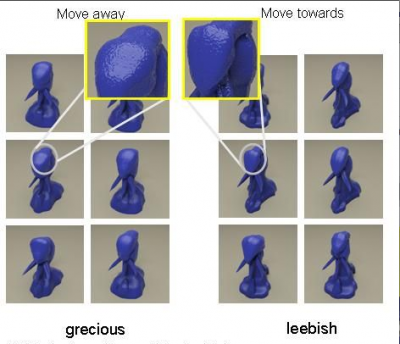Studies in the late 1990s indicated that infants are better able to group objects into categories– animals versus vehicles, say– if they have already learned the category names…
Gary Lupyan of the University of Wisconsin at Madison… asked 44 adults to look at a series of images of imaginary aliens. Whether each alien was friendly or hostile was determined by certain subtle features, though participants were not told what these were. They had to guess whether each alien was friendly or hostile, and after each response they were told if they were correct or not, helping them learn the subtle cues that distinguished friend from foe– such as the presence of a ridge on the head. A quarter of the participants were told in advance that the friendly aliens were called “leebish” and the hostile ones “grecious,” while another quarter were told the opposite. For the rest, the aliens remained nameless.
Lupyan found that participants who were given names for the aliens learned to identify the predators far more quickly, reaching 80 per cent accuracy in less than half the time taken by those not told the names. By the end of the test, those told the names could correctly categorise 88 per cent of the aliens, compared to just 80 percent for the rest (Psychological Science, vol 18, p 1077). So naming objects helps us categorise and memorise them, Lupyan concluded.
—From New Scientist, “The voice of reason,” by David Robson. 4 September 2010. For more about the experiments, visit Lupyan’s projects page.

